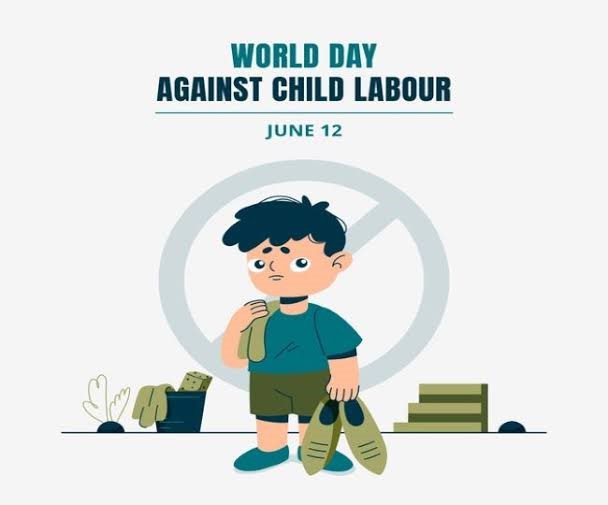VELPUR’S MODEL TO END CHILD LABOUR
VELPUR’S MODEL TO END CHILD LABOUR
Syllabus:
GS Paper – 2 Government Policies & Interventions Issues Related to Children
Why in the News?
June 12 marks the World Day Against Child Labour, observed globally under the International Labour Organization (ILO) to highlight persistent child labour issues. This day serves as an opportunity to reflect on why child labour should be stopped, its impacts, and the importance of social protection measures. Despite the UN’s SDG Target 8.7 aiming for child labour elimination by 2025, countries like India continue to struggle. However, Velpur in Telangana offers a rare and replicable success story in the fight against child labour, demonstrating effective social protection measures and rehabilitation efforts.
GLOBAL CHILD LABOUR CRISIS
- Alarming Statistics: According to Global Estimates, an estimated 160 million children are engaged in child labour worldwide, translating to 1 in every 10 children. These statistics highlight the urgent need for social protection measures and decent work opportunities for adults to prevent child exploitation in both formal and informal economies, including global supply chains.
- Regional Burden: Africa, Asia, and the Pacific account for nearly 90% of all working children, underlining regional inequalities and the prevalence of child labour in the informal economy and supply chains.
- Pandemic Effect: The COVID-19 pandemic worsened the crisis, pushing more children into labour due to school closures and family income loss, exacerbating economic vulnerability and highlighting the need for stronger social protection systems in times of fragility and crisis.
- Educational Setback: Many children who dropped out of school during the pandemic have not returned, stalling their development and access to free education. This emphasizes why child labour should be stopped and the importance of rehabilitation programs and special schools for former child labourers.
- ILO’s Call: The ILO and SDGs push for urgent and collaborative action to eliminate child labour by 2025, emphasizing the need for decent work opportunities for adults and comprehensive social protection measures to prevent child labour in formal and informal economies, including global supply chains.
INDIA’S CHILD LABOUR PROFILE
- Census Numbers: As per Census 2011, around 43.5 lakh children (ages 5–14) were engaged in labour across India, highlighting the need for a comprehensive child labour in India project. This underscores the urgency of addressing this issue through social protection and rehabilitation efforts.
- Sectoral Involvement: Children are mostly employed in beedi factories, carpet weaving, and fireworks industries, where low wages and lack of regulation prevail in the informal economy and supply chains. These hazardous occupations pose significant risks to working children, emphasizing why child labour should be stopped.
- Legal Milestones: The Child Labour (Prohibition and Regulation) Act, 1986 was amended in 2016 to include hazardous work prohibition for adolescents, strengthening child labour laws and legal enforcement mechanisms.
- Policy Gaps: Despite the National Child Labour Policy (1987) and various schemes, enforcement and community mobilization remain weak, necessitating improved measures to prevent child labour and enhance social protection in both formal and informal economies.
- Education Rights: The Right to Education (RTE) Act mandates free and compulsory education, yet implementation in remote and poor regions remains inconsistent, affecting child rights and highlighting the need for special schools and rehabilitation programs.
VELPUR BEFORE THE TRANSFORMATION
- Child Labour Hub: Velpur, in Nizamabad district, was notorious for widespread child labour before 2001, exemplifying the challenges in child labour-endemic districts. Understanding the history of child labour in this region is crucial for developing effective solutions.
- Community Reluctance: Locals were initially resistant and suspicious of government officials advocating school enrolment, highlighting the need for awareness generation and social dialogue on why child labour should be banned.
- Misinformation Spread: Rumours circulated that the teams were kidnappers harvesting children’s organs, showcasing the barriers to social dialogue and community participation in efforts to stop child labour.
- Social Ostracisation: Officials were denied basic hospitality, and their presence was mocked in tea stalls and public spaces, illustrating the challenges in community mobilization and the importance of social protection measures.
- Ineffective Drives: Past interventions were short-lived, with children returning to labour due to economic compulsions and lack of monitoring, emphasizing the need for sustainable solutions and long-term rehabilitation programs.
IMPLEMENTING THE VELPUR MODEL
- Bold Initiative: In June 2001, officials launched a community-wide campaign to ensure that all children aged 5–15 went to school, initiating a process of rehabilitation and mainstreaming. This approach demonstrated how to stop child labour through community engagement and poverty alleviation efforts.
- Persistent Action: A 100-day sustained drive led to Velpur being declared a child labour-free mandal on October 2, 2001, showcasing effective measures to prevent child labour and promote decent work opportunities for adults in both formal and informal economies.
- Public Meetings: Village-level meetings spread awareness about the importance of education, encouraging collective accountability and social dialogue to address child labour issues. These meetings often included speeches on why child labour should be stopped, reinforcing the negative impacts on children and society.
- Bridge Schools: Under the National Child Labour Project (NCLP), former child labourers were rehabilitated in special schools before regular enrolment, addressing the need for vocational training and education as a form of social protection.
- Sarpanch Engagement: All village heads (sarpanchs) signed agreements with the government to enforce compulsory primary education, demonstrating local commitment to child labour prevention and the promotion of decent work opportunities.
COMMUNITY AS THE CATALYST
- Public Mobilisation: Over time, the movement turned into a community-owned campaign, with locals actively supporting the cause of child labour elimination through enhanced social protection measures and awareness of why child labour should be stopped.
- Employer Transformation: Former employers forgave debts worth ₹35 lakh, which parents owed after taking informal loans secured by child labour, addressing economic vulnerability and promoting decent work alternatives in the informal economy.
- Symbolic Acts: Employers not only released children but also gifted school supplies, becoming advocates for education and decent work opportunities in the formal economy and supply chains.
- Signage of Pride: Boards were erected across villages proudly declaring “No child labour in our village”, reinforcing public commitment to stop child labour and promote social protection.
- Media Challenge: In 2021, local media were challenged to find a single child not in school, and none could, demonstrating the success of the child labour prevention efforts and the effectiveness of rehabilitation programs.
RECOGNITION AND LEGACY
- National Honour: In 2021, the VV Giri National Labour Institute honoured Velpur’s leaders and community members during ‘Azadi ka Amrit Mahotsav’, recognizing their efforts in child labour elimination and promotion of decent work.
- International Attention: The model drew appreciation from ILO, education experts, and even President A.P.J. Abdul Kalam, highlighting its potential as a solution for child labour globally and an example of effective social protection measures.
- Policy Influence: Velpur’s success was discussed before the Parliamentary Standing Committee on Labour, leading to its recognition as a case study in how to control child labour through community participation and social dialogue.
- Sustainable Change: Two decades later, Velpur boasts 100% school retention and zero child labour, making it a model of sustained transformation and effective social protection in the fight against child labour.
- Training Model: Velpur’s journey is now part of training modules at national institutes, promoting replication and best practices in child labour prevention, rehabilitation, and the promotion of decent work opportunities in both formal and informal economies.
Conclusion
Velpur’s journey demonstrates that the elimination of child labour is possible when legal provisions align with local ownership and comprehensive social protection measures. Its community-first approach, symbolic gestures, and persistence have transformed a once-troubled region into a beacon of hope. Velpur stands as evidence that people’s movements can outlast policy interventions when rooted in conviction, offering valuable insights for a comprehensive child labour essay or speech on child labour.
Paragraph on Child Labour
The success of the Velpur model highlights the importance of rehabilitation, decent work opportunities, and strong social protection systems in addressing the complex issue of child labour. It serves as a powerful example of why child labour should be stopped and how communities can work together to create lasting change, even in times of fragility and crisis, ultimately breaking the cycle of poverty and exploitation in global supply chains. This article on child labour demonstrates that with concerted efforts, we can answer the question of what is child labour with action, transforming communities and protecting children’s rights.
While there are some who argue about the advantages and disadvantages of child labour, particularly in economically disadvantaged areas, the Velpur model clearly shows that the long-term benefits of education and social protection far outweigh any short-term economic gains from child labour. By focusing on community engagement, decent work for adults, and strengthening the informal economy, Velpur has created a sustainable solution that addresses the root causes of child labour. The Global Estimates serve as a stark reminder of the work still needed, but Velpur’s success provides hope and a roadmap for effective action.
Source : T H
Mains Practice Question:
“Child labour cannot be ended by legislation alone; it requires a sustained community movement.” Critically analyse this statement in the context of the Velpur model.






